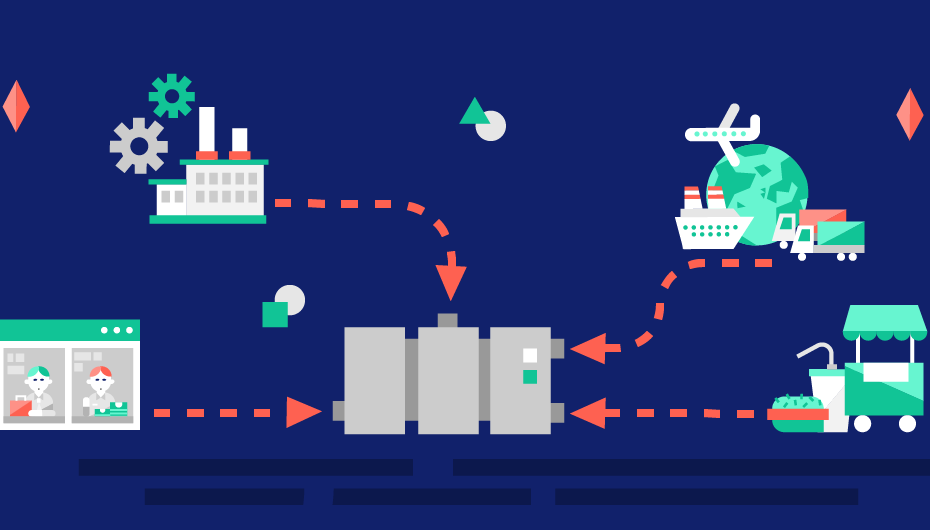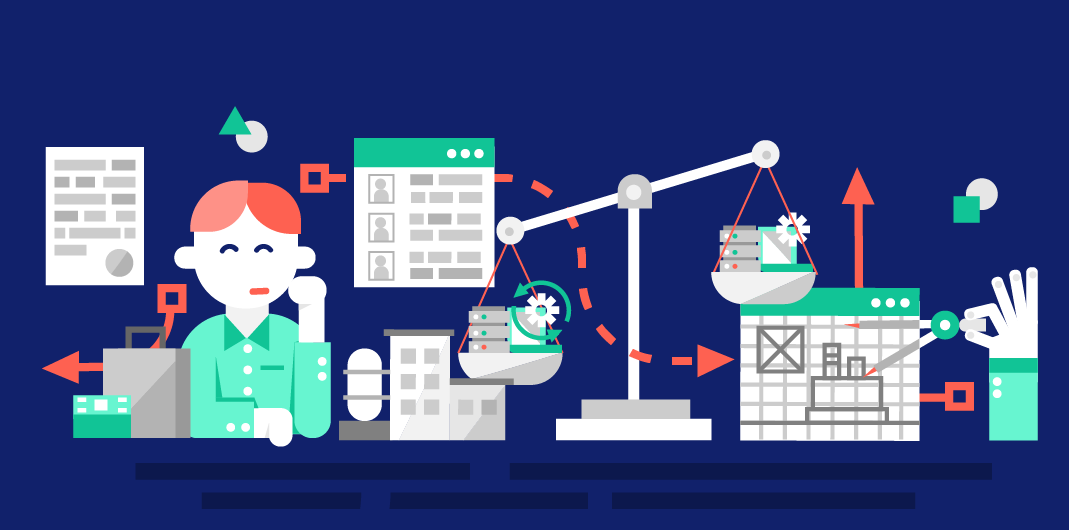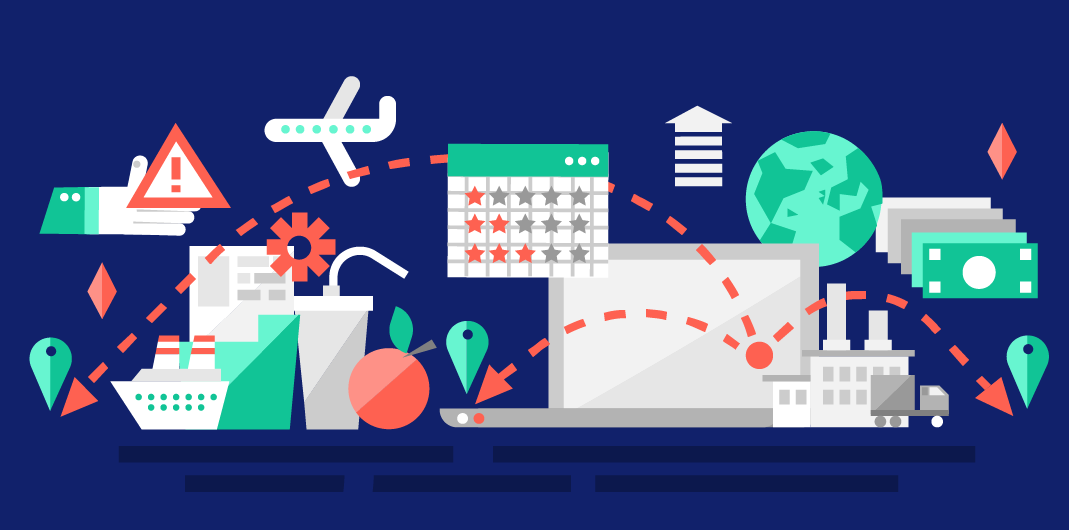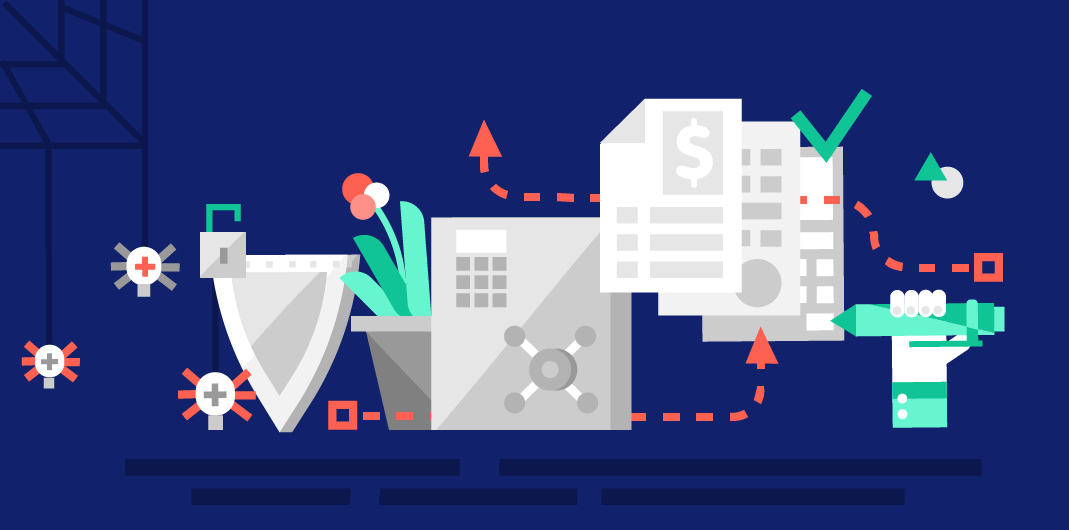Despite the amazing capabilities of current ERP systems, they somehow continue to improve. A confluence of cloud-based computing and big data have allowed companies to adopt a “best of breed” approach for their ERP needs. Learn about the current and future state of ERPs to prepare your hardware startup for scale.
Next-Level Resource Planning
The more companies used early resource planning systems, the more they wanted to integrate everything all in one place. Despite the advances that came along with the Manufacturing Resource Planning (MRP-2) system, it still didn’t exactly function like a “one-stop-shop”. That’s why beginning in the 1990’s, the capabilities of some MRP-2 systems were further expanded to include more functions like supply chain integration, shipping, and order management. As their scope expanded to encompass processes outside of manufacturing and materials, these next-level MRP-2 systems became known as Enterprise Resource Planning (ERP) systems. Sound familiar?
Today, ERP systems are considered to be a must-have once a company begins to grow and scale. In fact, according to the Aberdeen Group, 96% of best-in-class growing businesses (that is, the top 20% of performers) have implemented an Enterprise Resource Planning solution. Why is this the case? Simply stated, ERP solutions help make life easier for businesses by promoting visibility, efficiency, and decision-making. They do this by streamlining operations across four main areas: 1) production and equipment management, 2) supplier integration and coordination, 3) order processing and delivery, and 4) customer relationship management.
#1 – Production and Equipment Management
As a hardware entrepreneur that deals with manufacturing on a regular basis, you’re probably well-aware that equipment and resources are the primary constraints on production. That’s why it’s absolutely essential that they are utilized in an optimal manner. With an ERP system, companies can manage their production equipment as independent asset resources. In other words, for any given production job, an equipment item can be assigned to a particular job or process. This helps prevent the equipment item from being scheduled for multiple jobs at one time. Although this might sound simple, you’d be surprised how many scheduling mix-ups can occur in a scaled operation. What’s more, ERP systems can schedule necessary downtime and maintenance periods in order to maximize the life of the equipment.
#2 – Supplier Integration and Coordination
Let’s not forget that as a hardware-based business, you’re probably not the only one involved in bringing your product design to life. You have to take your suppliers into account when it comes to holistic resource planning. Manufacturers compete as participants in integrated supply chains, requiring closer coordination with their suppliers. Indeed, managing communication with your suppliers is an important part of developing a strategic partnership that will add long-term value. Many modern ERP systems have the ability to share data directly with supplier’s systems, providing real-time information on orders and delivery status. This opens up new dimensions for manufacturers to competitively improve efficiencies and service levels.
One of the most common methods for communicating with suppliers and other trading partners is called Electronic Data Interchange (EDI). Instead of having to send an email for each individual event, EDI enables companies’ computers to communicate directly with each other in real time. The result? Dramatically reduced processing time and improvements in overall accuracy. However, it is worth noting that companies may encounter data management challenges on the road to implementing an EDI integration. Each integration costs both parties a ton of time and effort to set up on the front-end. This is because while the EDI format is standardized, the way in which data is organized and made available is often unique for each individual company. Oftentimes, vendors or suppliers have their own proprietary portal, which may require writing custom APIs to interface with and access data. Not to mention, substantial culture and process changes may be required to accommodate data integration. Yet, despite these challenges, the final outcome is likely to be worth the wait.
#3 – Order Processing and Delivery
ERP systems streamline the end-to-end process for customers, from placing their order to receiving their shipment. Let’s start from the beginning: when a customer enters an order, the ERP system indicates whether or not the item is available. If it’s not available, a request to make or purchase the item is automatically triggered. Next, the system flags the items that are committed to that order so they are not otherwise used. A check is run on the customer’s payment record to confirm whether or not a payment must be received prior to delivery. Finally, once all order conditions have been met, the system triggers a “go” in the shipping process.
When processing the shipment, the ERP usually issues a picking ticket, packing list, and shipping labels. The picking ticket informs the warehouse of which items to pull from stock, how to package them, and how to deliver them. The packing list shows the contents of a delivery and is usually provided to the customer in one of the packages for identification purposes. Finally, the shipping labels provide the shipper with instructions as to how and where to ship the package. For instance, if shipping to an out-of-country address, a commercial invoice must be included for the package to clear customs.
#4 – Customer Relationship Management
It’s important for manufacturers to respond almost immediately to the needs of high-priority customers (such as distributors or resellers). In fact, in today’s marketplace, practically all customers expect to receive timely communications, updates, and answers to their questions. An ERP supports
manufacturer responsiveness by automatically transmitting order status updates and shipment tracking information directly to customers. It also maintains details about the key contacts for each customer.
From an internal perspective, an ERP system provides remote access so that field representatives can obtain real-time information and update orders on-the-go from their mobile devices. The system also alerts users of any issues within the supply chain, such as lead time changes, material rejections, and transportation delays. All in all, ERP systems keep your team and your customers informed and up-to-date so that everyone is on the same page.
The Future of ERP
Despite the amazing capabilities of current ERP systems, they somehow continue to improve. A confluence of cloud-based computing and big data have allowed companies to adopt a “best of breed” approach for their ERP needs. Instead of depending on a single ERP suite to handle all of their processes, companies can mix applications to handle different aspects of their business, stitching them together with integration middleware. Not only does this mean more customized business solutions, but companies don’t need to maintain dedicated IT assets when they host their ERP on cloud servers. Thus, this makes ERP systems accessible from any mobile device.
As confirmed in Accenture’s 2019 ERP Trends report, there seems to be exponential evolution when it comes to digital transformation and resource planning. These kinds of systems help organizations unlock their true potential – something worth considering as you prepare to grow and scale.
Thinking about implementing ERP at your company? Join our community of hardware entrepreneurs and learn how to do it effectively for your particular business.



